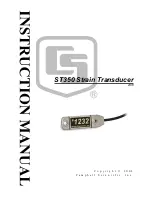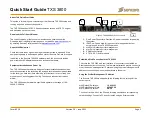
MAINTENANCE
PREVENTIVE MAINTENANCE PROCEDURES
WBPEEUI110504A0
7 - 3
2. Wipe the indicator window with the soft, lint-free cloth
until all deposits are removed and the indicator can be easily
viewed.
Transmitter Exterior Cleaning
The equipment needed to perform this procedure is dependent
upon the standard cleaning procedures employed by the
customer.
In some processes, it is necessary to clean out the deposits of
solid matter, crystals, and viscous condensates from the mea-
suring chambers of the cell.
When cleaning the exterior of the transmitter, it is common to
hose the unit down to free it of dust and process deposits.
When this is done, the temperature of the medium (water,
steam, or air) should not exceed the specifications of the trans-
mitter and associated components (Table
).
If possible, do not remove the process flanges from the cell
after removing the transmitter from the process. If it is neces-
sary to remove the process flanges, refer to the following proce-
dure.
The equipment required to remove the process flanges and
associated equipment is:
•
Adjustable end wrench.
•
Torque wrench:
— 65 to 69 Nm (48 to 52 ft-lbs) for stainless steel and
NACE process flange nuts.
— 78 to 82 Nm (57 to 61 ft-lbs) for carbon steel process
flange nuts.
— 179 to 191 Nm (131 to 141 ft-lbs) for high static pres-
sure process flange nuts.
— 45 to 49 Nm (33 to 37 ft-lbs) for the flange adapter bolts.
CAUTION
If the cell with characterization board assembly has been
cleaned for oxygen and chlorine service, do not compromise
the integrity of this cleaning during these procedures. Impuri-
ties will react with oxygen and chlorine and damage the trans-
mitter and the process.
Clean the diaphragms with a soft rag and appropriate solvent.
The use of metal brushes, blades, or other tools will damage
the diaphragms.
Содержание Platinum standard Series
Страница 1: ......
















































